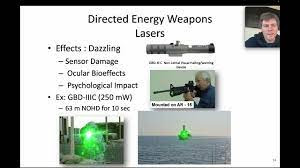Patent No. 6330885 Remotely interrogated implant device with sensor for detecting accretion of biological matter
Patent No. 6330885
Remotely interrogated implant device with sensor for detecting accretion of biological matter (Weissman, et al., Dec 18, 2001)
Abstract
An implant device which includes a structure implantable within a living animal and a sensor included as part of the structure. The sensor is operatively configured to detect accretion of biological material on the sensor by producing an output which varies as a function of the accretion of biological material on the sensor. A communication element is further included as part of the structure and is operatively coupled to the output of the sensor. The communication element is configured to communicate information based on the output of the sensor wirelessly to a remote element located outside the living animal.
Notes:
SUMMARY
OF THE INVENTION
The present invention is responsive to the aforementioned shortcomings with
conventional devices, and is directed towards an implant device to be implanted
within a living animal. One or more sensors are included in the device and serve
to detect directly the amount of biological material such as restenosis which
builds up on the sensors. This provides a direct indication of the amount of
biological material which may be occluding a vein or artery, for example. The
output of the sensor is coupled to a communication element which communicates
information to a remote element outside the living animal so that the information
may be processed to provide a diagnosis.
In such manner, the present invention does not require the calculation of transit
times, Doppler measurements or pressure gradients between different sensors
in order to be able to infer the amount of build up of biological material.
Rather, the build up of biological matter on a given sensor itself is detected
to indicate more directly the occurrence of restenosis, etc.
In one embodiment, the implant device includes a SAW sensor. The output of the
sensor is designed to be a function of the amount of biological material which
builds up on the surface of the sensor. More specifically, the output of the
sensor varies as the accretion of biological material increases. For example,
the accretion of biological material alters the extent to which the surface
acoustic wave is able to couple energy to the surrounding medium within the
body of the living animal.
In another embodiment, the implant device includes a microelectrical-mechanical
sensor (MEMs) device, hereinafter referred to as a MEMs sensor. The MEMs sensor
in a preferred embodiment includes at least one cantilever beam. The amount
of build up of biological matter on the cantilever beam varies the output of
the sensor, so as to provide an indication of the amount of accretion.
According to one particular aspect of the invention, an implant device is provided
which includes a structure implantable within a living animal; a sensor included
as part of the structure, the sensor being operatively configured to detect
accretion of biological material on the sensor by producing an output which
varies as a function of the accretion of biological material on the sensor;
and a communication element included as part of the structure and operatively
coupled to the output of the sensor, the communication element being configured
to communicate information based on the output of the sensor wirelessly to a
remote element located outside the living animal.
In accordance with another aspect of the invention, a diagnostic system is provided
which includes a structure implantable within a living animal; a sensor included
as part of the structure, the sensor being operatively configured to detect
accretion of biological material on the sensor by producing an output which
varies as a function of the accretion of biological material on the sensor;
a communication element included as part of the structure and operatively coupled
to the output of the sensor, the communication element being configured to communicate
information based on the output of the sensor wirelessly to a remote element
located outside the living animal; the remote element configured to receive
the information from the communication element outside the living animal; and
a processor for processing the information received by the remote element based
on the function to provide a diagnostic output.
To the accomplishment of the foregoing and related ends, the invention, then,
comprises the features hereinafter fully described and particularly pointed
out in the claims. The following description and the annexed drawings set forth
in detail certain illustrative embodiments of the invention. These embodiments
are indicative, however, of but a few of the various ways in which the principles
of the invention may be employed. Other objects, advantages and novel features
of the invention will become apparent from the following detailed description
of the invention when considered in conjunction with the drawings.
------------------------------
Although
the invention has been shown and described with respect to certain preferred
embodiments, it is obvious that equivalents and modifications will occur to
others skilled in the art upon the reading and understanding of the specification.
The present invention includes all such equivalents and modifications, and is
limited only by the scope of the following claims.




Comments